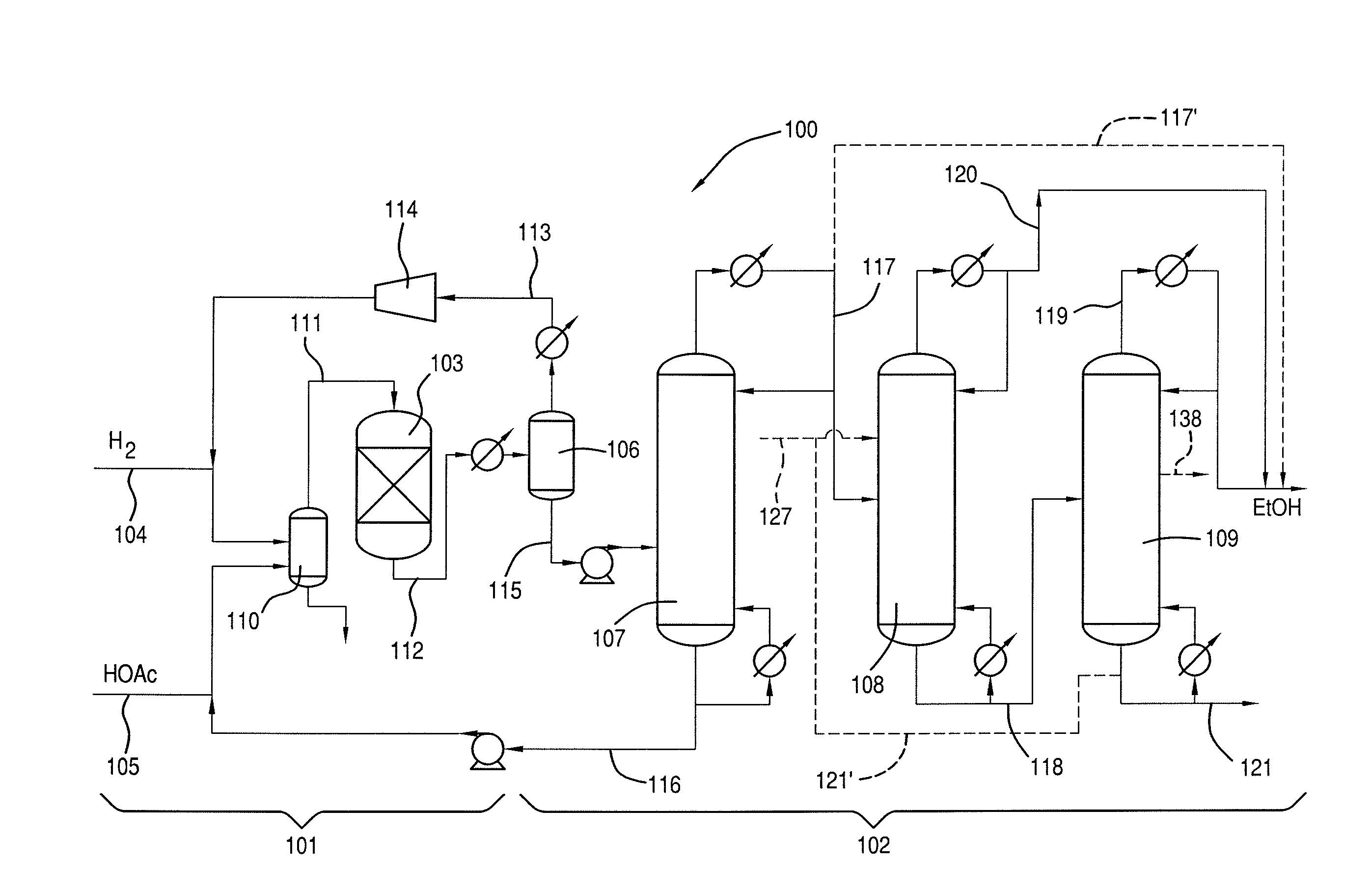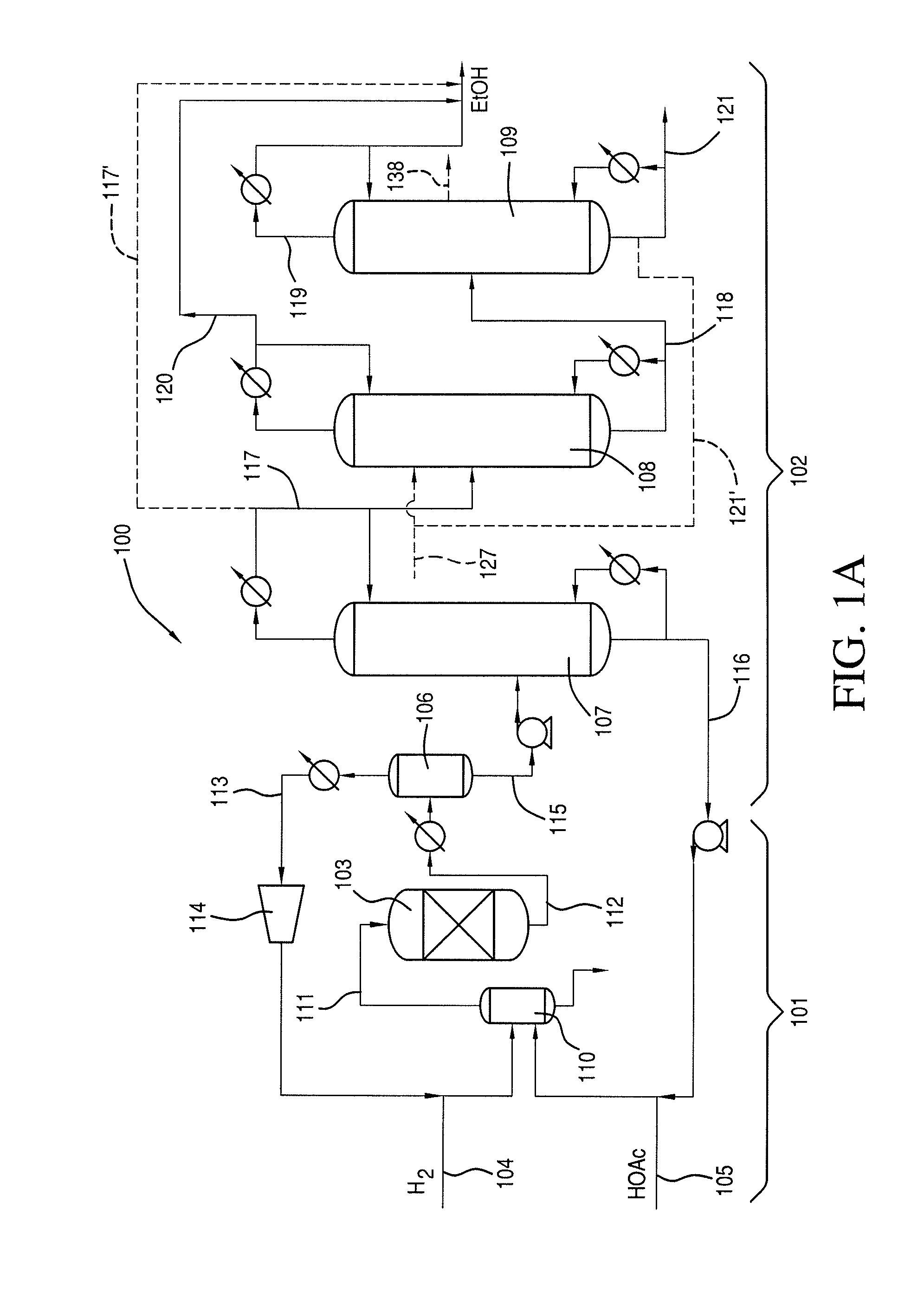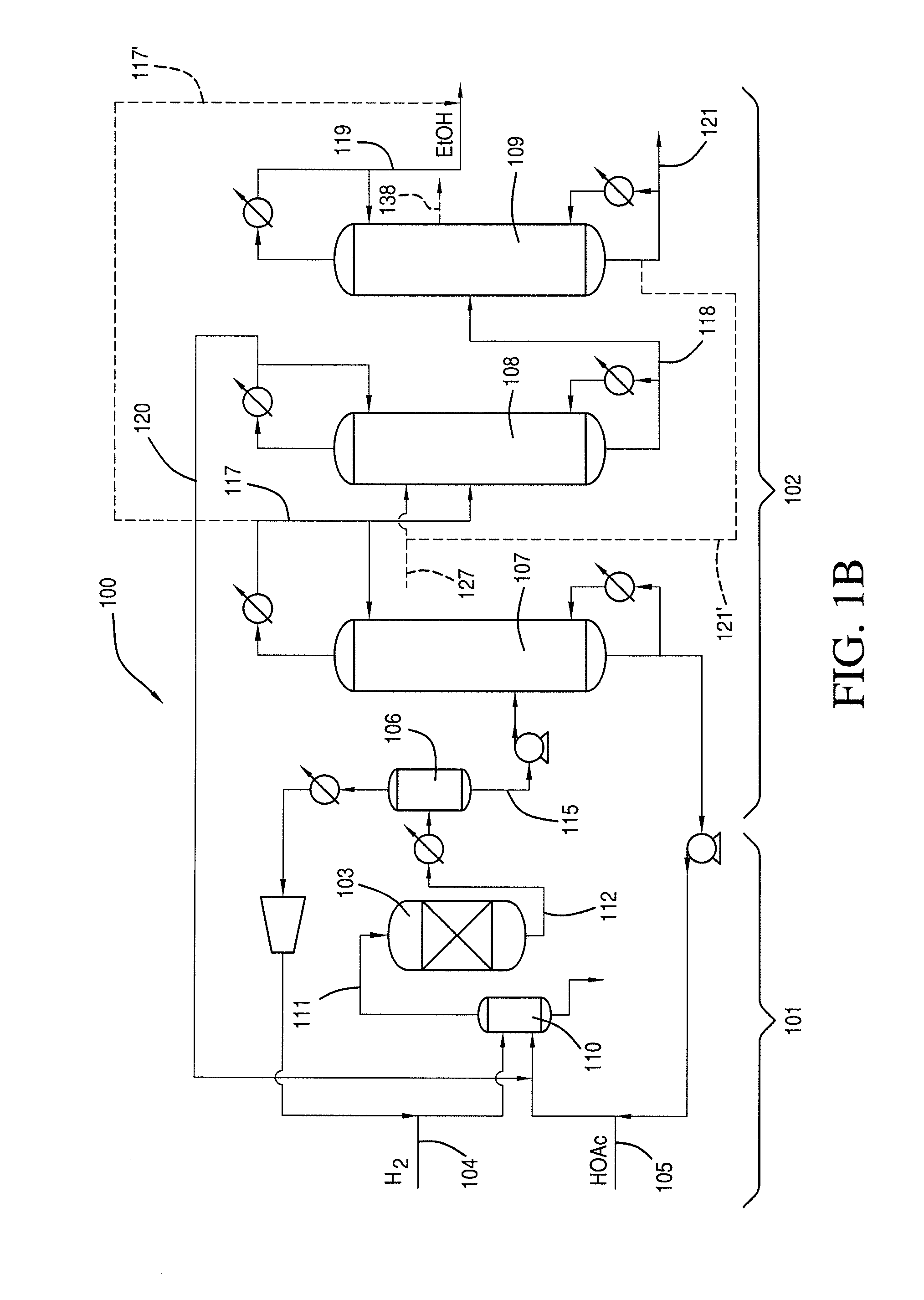Processes for producing denatured ethanol
a technology of denatured ethanol and composition, which is applied in the direction of dissolving, other chemical processes, fuels, etc., can solve the problems of increasing the cost to consumers, adding complication and cost to the conventional process of forming denatured ethanol,
- Summary
- Abstract
- Description
- Claims
- Application Information
AI Technical Summary
Benefits of technology
Problems solved by technology
Method used
Image
Examples
example 1
[0111]A crude ethanol product comprising ethanol, acetic acid, water, and ethyl acetate was produced by reacting a vaporized feed comprising 95.2 wt. % acetic acid and 4.6 wt. % water with hydrogen in the presence of a catalyst comprising 1.6 wt. % platinum and 1 wt. % tin supported on ⅛ inch calcium silicate modified silica extrudates at an average temperature of 291° C., an outlet pressure of 2,063 KPa. Unreacted hydrogen was recycled back to the inlet of the reactor such that the total hydrogen / acetic acid molar ratio was 5.8 at a GHSV of 3,893 hr−1. Under these conditions, 42.8% of the acetic acid was converted, and the selectivity to ethanol was 87.1%, selectivity to ethyl acetate was 8.4%, and selectivity to acetaldehyde was 3.5%. The crude ethanol mixture was purified using a separation scheme having distillation columns as shown in FIG. 1A.
[0112]The crude ethanol product was fed to the first column at a feed rate of 20 g / min. The composition of the liquid feed is provided in...
example 2
[0116]A crude ethanol product comprising ethanol, acetic acid, water and ethyl acetate was produced by reacting a vaporized feed comprising 96.3 wt. % acetic acid and 4.3 wt. % water with hydrogen in the presence of a catalyst comprising 1.6 wt. % platinum and 1% tin supported on ⅛ inch calcium silicate modified silica extrudates at an average temperature of 290° C., an outlet pressure of 2,049 KPa. Unreacted hydrogen was recycled back to the inlet of the reactor such that the total hydrogen / acetic acid molar ratio was 10.2 at a GHSV of 1,997 hr−1. Under these conditions, 74.5% of the acetic acid was converted, and the selectivity to ethanol was 87.9%, selectivity to ethyl acetate was 9.5%, and selectivity to acetaldehyde was 1.8%. The crude ethanol mixture was purified using a separation scheme having distillation columns as shown in FIG. 1A.
[0117]The crude ethanol product was fed to the first column at a feed rate of 20 g / min. The composition of the liquid feed is provided in Tabl...
example 3
[0120]A crude ethanol product comprising ethanol, isopropanol, acetic acid, water, and ethyl acetate was produced by reacting a vaporized feed comprising 98 wt. % acetic acid and 2 wt. % acetone with hydrogen in the presence of a catalyst comprising 1.6 wt. % platinum and 1 wt. % tin supported on ⅛ inch calcium silicate modified silica extrudates at an average temperature of 291° C., an outlet pressure of 1,420 KPa. The catalyst was diluted at a volume ratio of 1:1 with 3 mm glass beads. Under these conditions, the acetone conversion was 68% and, after separation, the resulting ethanol / isopropanol mixture comprised 4.3 wt. % isopropanol.
[0121]The composition of the resultant crude ethanol composition is provided in Table 12.
TABLE 12Componentwt. %Ethanol30.7Acetaldehyde0.3Acetone0.6Isopropanol1.3Ethyl Acetate3.4Acetic Acid50.9Acetal0.5
[0122]As shown in Table 12, the addition of acetone to the acetic acid feed provides for isopropanol product when the acetic acid feed is hydrogenated....
PUM
| Property | Measurement | Unit |
|---|---|---|
| Volume | aaaaa | aaaaa |
| Volume | aaaaa | aaaaa |
| Volume | aaaaa | aaaaa |
Abstract
Description
Claims
Application Information
 Login to View More
Login to View More - R&D
- Intellectual Property
- Life Sciences
- Materials
- Tech Scout
- Unparalleled Data Quality
- Higher Quality Content
- 60% Fewer Hallucinations
Browse by: Latest US Patents, China's latest patents, Technical Efficacy Thesaurus, Application Domain, Technology Topic, Popular Technical Reports.
© 2025 PatSnap. All rights reserved.Legal|Privacy policy|Modern Slavery Act Transparency Statement|Sitemap|About US| Contact US: help@patsnap.com



